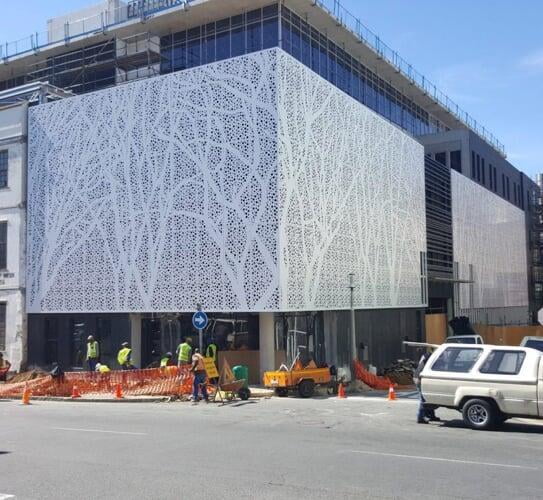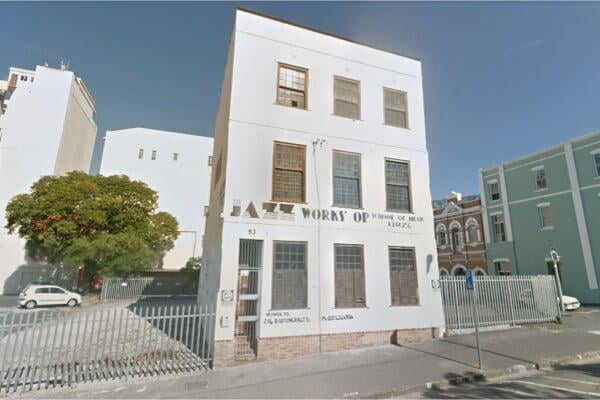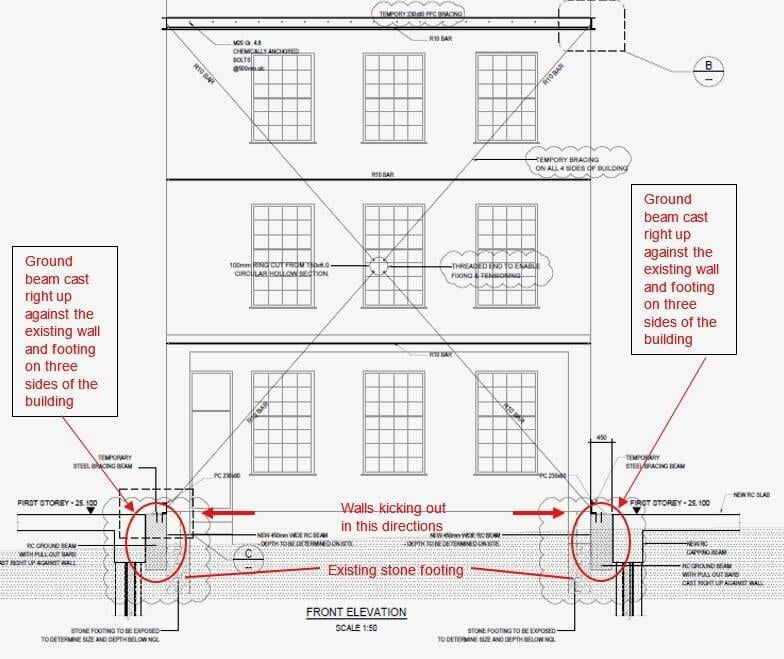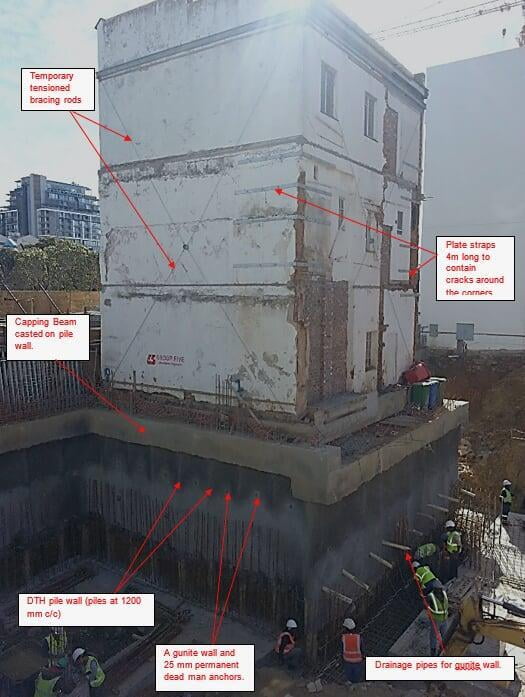11th June 2018
By Madeleine Visagie
The tricky truth to how NWE preserved the Jazz Workshop Building when designing the new City Depot on the corner of Buitengracht Street and Hout Street, Cape Town.
Some buildings epitomises the whole character of an area, and if this is not protected, we stand the risk of losing some valuable elements of our heritage. This is also the case with the Jazz Workshop Building on Buitengraght Street. However, when the City of Cape Town: Electricity Services appointed NWE Consulting Engineers and EBESA Architects to design a City Depot on the site, it took a great deal more than good intentions to preserve this small part of our heritage.


Heritage Aspects:
The original structure of the Jazz Workshop Building dates back to the 18th century, if not earlier, but it underwent a substantial makeover apparently in the 1950’s. Notwithstanding the makeover, the building retained its overall early form including general front fenestration pattern and proportions.
Since the demolition of the structures surrounding it, it has become a local landmark on Buitengracht Street despite its modest size. Since 1965, the building has become strongly associated with jazz education and jazz performance in Cape Town. It is clearly significant by virtue of its strong historical associations with the development of jazz in the Mother City, particularly during the time of apartheid. The building also contains early surviving brickwork dating back 200 years and possibly more.
The Jazz Workshop building makeover is now older than 60 years and the whole building has predominantly contextual rather than intrinsic architectural / aesthetic and historical significance. It was graded therefore by ARCON heritage consultants as a historic building contributing significance. By retaining the front part of the structure it would enable the majority of the ancient brickwork surviving as well as the period joinery (staircase and doors) that survived with in the building.
Structural Challenges:
The architectural design of the City Depot incorporated a basement covering the whole site. The design and construction of the basement had to take in to account the protrusion of the founding material of the Jazz Workshop building.
Another challenge NWE’s structural engineers had to take into consideration was the nature of the original foundations of the historic building. It was alleged to be stones bonded with products not containing any cement. If construction activities caused ground movement due to the excavations of the new basement, vibration from drilling, hammering and blasting, the brittle founding material could cause cracking or maybe failure of the historic structure.
It was decided that the courtyard and backroom adjacent to the stair should be demolished. This has the result of a simpler, compact and symmetrical building and could be “strapped” around the perimeter.


Construction:
NWE and the contractor Group Five had to come up with a construction methodology that would ensure the historic building remained intact. The following actions were decided on and was executed with the utmost care.
- The suspended timber floors in the Jazz Workshop Building were propped from groundfloor up.
- Tie bars on the outside of the building were installed on each floor level. They were tensioned and grouted.
- The backroom was demolished with caution by using mechanical breakers with a low level of vibration.
- Temporary bracing rods were installed and tensioned on the outside walls to increase stability of the structure.
Another problem always encountered when dealing with historic buildings is that failures of these structures happen when the bottom parts of the walls kick out to the sides. Therefore the next step was to contain the founding members of the walls at the bottom to ensure the building do not collapse when piling and excavations for the basement commence.
A ground beam 450 mm wide was cast right up against the existing walls and foundations on three sides of the building to stabilize and secure the foundations and walls (See Figure 2). With these ground beams cast and cured to the specified strength, piling around the Jazz Workshop building could commence, considerably reducing the risk of the foundations collapsing.
All went well up to this point, but as perceived existing cracks started to form at the back corners of the historic building. Erik van Eeden, our structural engineer on site, instructed the contractor to contain and close these cracks by using 100 x 6 mm plate straps 4m long around the corners. (See Figure 3).
The piling and lateral support for the basement were designed and supplied by Franki Africa. A 300 mm diameter DTH (down the hole) pile wall (piles at 1200 mm c/c) was created around the perimeter on three sides of the Jazz Workshop Building.
In DTH (down the hole) drilling, the drill string rotates while the drilling hammer continuously strikes down into the founding material. The method was chosen because it produces significantly less vibration than many other drilling methods, making it the safest drilling method in the vicinity of the heritage building.
A triumph! The installation of the 26 piles around the Jazz Workshop did not cause any more cracks or further problems in the building. With the piles in place and the historic building still intact, a capping beam was cast on top of the piles. At that point the existing foundation of the building could be considered as underpinned and the excavation and lateral stabilization of the basement could commence.
Lateral stabilisation of the founding material underneath the heritage structure for the basement excavation was created with a gunite wall and 25 mm permanent dead man anchors. (See Figure 3.)
No extra precautionary measures for the stabilization of the building were taken during the excavation of the basement material and the construction of the gunite wall.
The construction of the new six level concrete building continued without any further challenges to the preservation of the Jazz Workshop Building.
In the end, despite the structural engineering and construction challenges, the Jazz Workshop Building was preserved for generations to come and it still stands proud and snugly embedded into the modern era.




